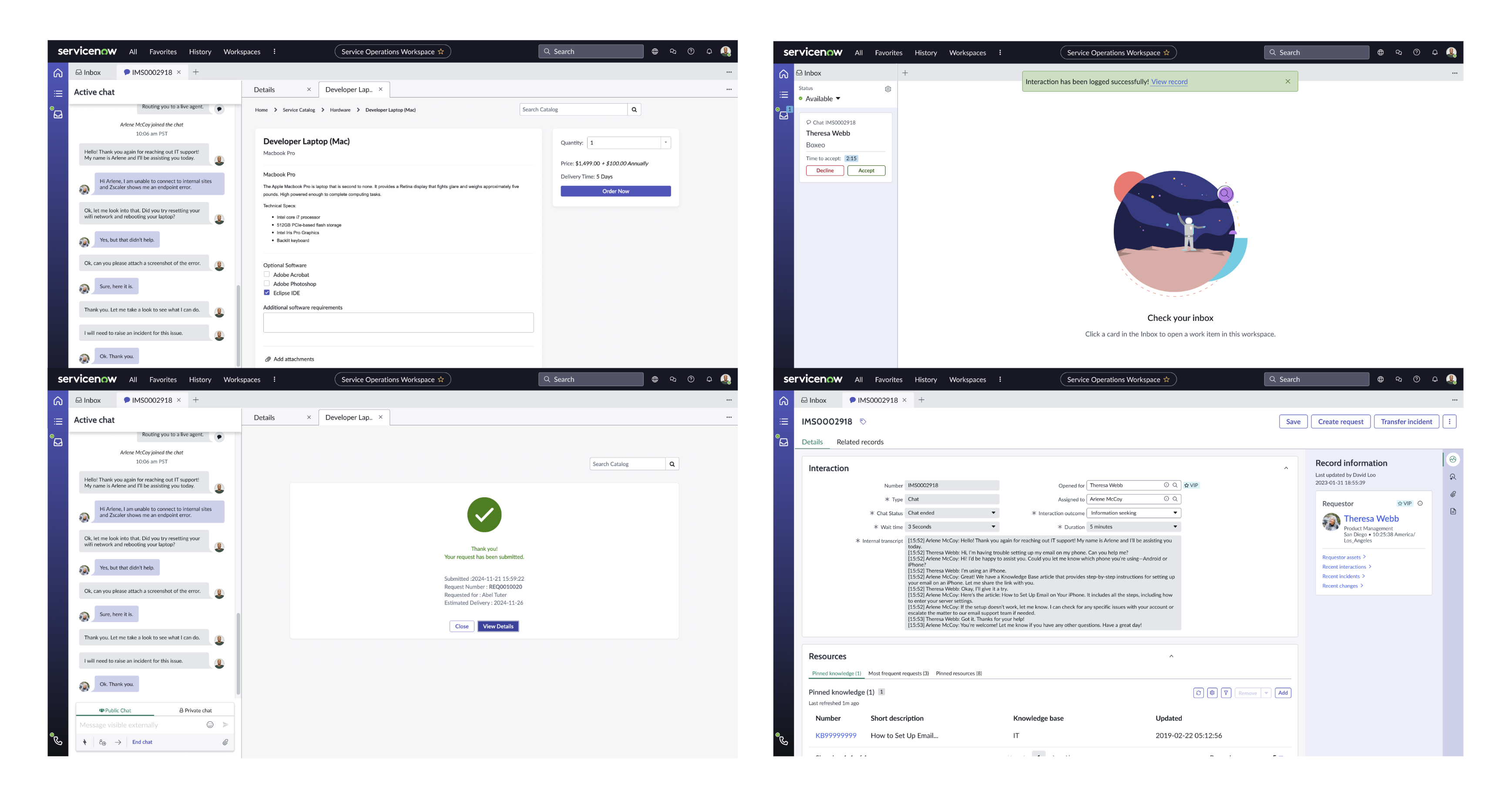
Details coming soon.
Project Goal: Streamline the Interaction Record (IMS) workflow in Service Operations Workspace to improve agent efficiency and reduce redundant data entry.
Agents were required to manage two separate records (IMS + Incident Record) for the same issue, causing:
✅ Increased workload – Agents spent unnecessary time duplicating information.
✅ Slower resolution times – Repetitive steps reduced efficiency.
✅ Customer resistance to platform upgrades – Some clients built custom workarounds to bypass IMS.
Methods Used:
Key Findings:
✔ Agents rarely reference IMS after filling it out.
✔ Duplicate records slow down workflows.
✔ Managers still need IMS for reporting purposes.
Workshop with Cross-Functional Teams to explore four potential directions:
1️⃣ Minimize IMS – Reduce required fields, keeping only essential data.
2️⃣ Remove IMS – Eliminate it entirely.
3️⃣ Merge IMS & Incident Record – Combine both into one record.
4️⃣ AI-Powered IMS – Automate data entry with AI.
🚀 Decision: Minimize IMS won because it reduced effort while maintaining necessary data.
Problem:
Design Solution:
✔ Predefined dropdowns replaced manual short descriptions, covering the most common outcomes (e.g., Transferred to Incident, Answered a Question).
✔ Auto-filled key details based on agent actions to minimize typing.
✔ Fields made read-only where possible, preventing unnecessary edits.
Impact:
✅ Faster task completion – Agents saved time by selecting predefined options.
✅ Improved consistency – Standardized data entries across interactions.
Problem:
Design Solution:
✔ Repositioned the resource panel higher to align with usage patterns.
✔ Collapsed the activity stream by default, reducing clutter.
✔ Introduced pinned resources, allowing agents to save frequently used references.
Impact:
✅ Agents found relevant information 30% faster in usability tests.
✅ Reduced screen clutter improved task focus.
Problem:
Design Solution:
✔ End Chat Button Relocation – Moved it next to the chat input field, aligning with user habits.
✔ Merged Action Buttons – Replaced “Complete” and “Close” with a single action button and a dropdown for alternative actions.
✔ Inline Confirmation UI – Agents no longer needed additional clicks for common actions.
Impact:
✅ 25% reduction in task completion time for chat interactions.
✅ 40% fewer errors from button misclicks.
✅ Reduced agent friction, leading to a 12% boost in CSAT scores.
.gif)
.gif)

📊 4 Weeks Post-Launch Data:
✔ Lessons Learned:
🔮 Future Enhancements: